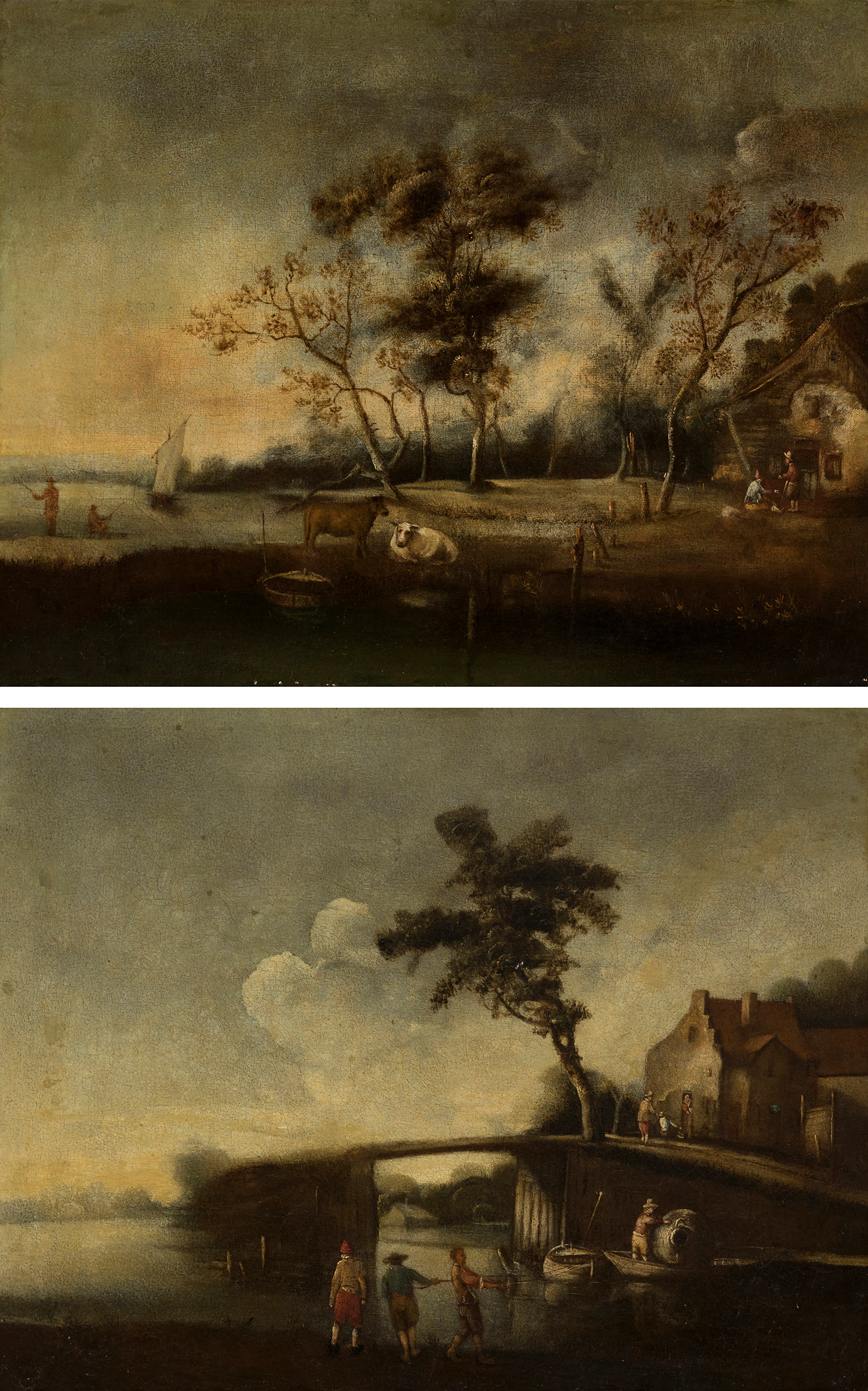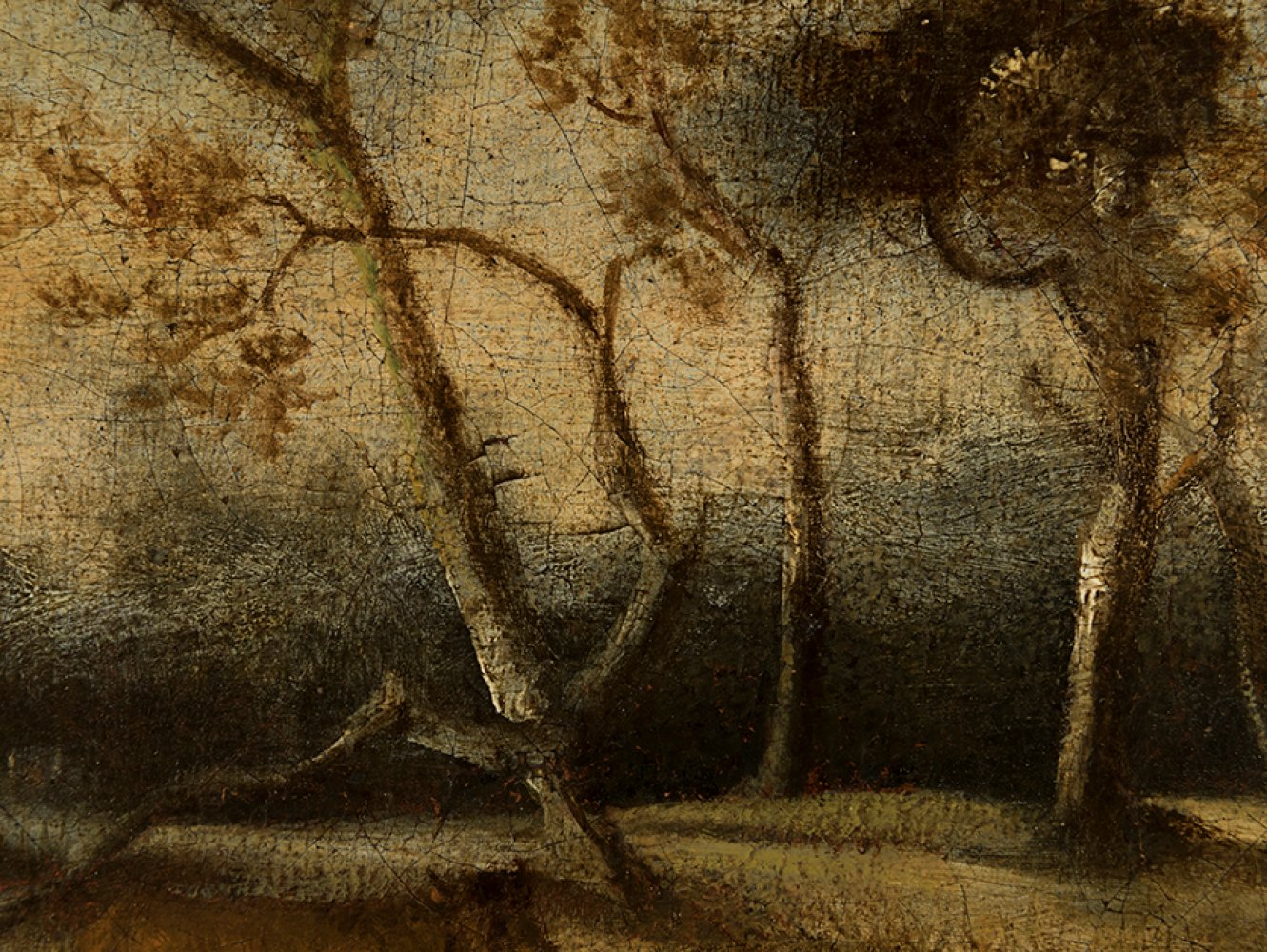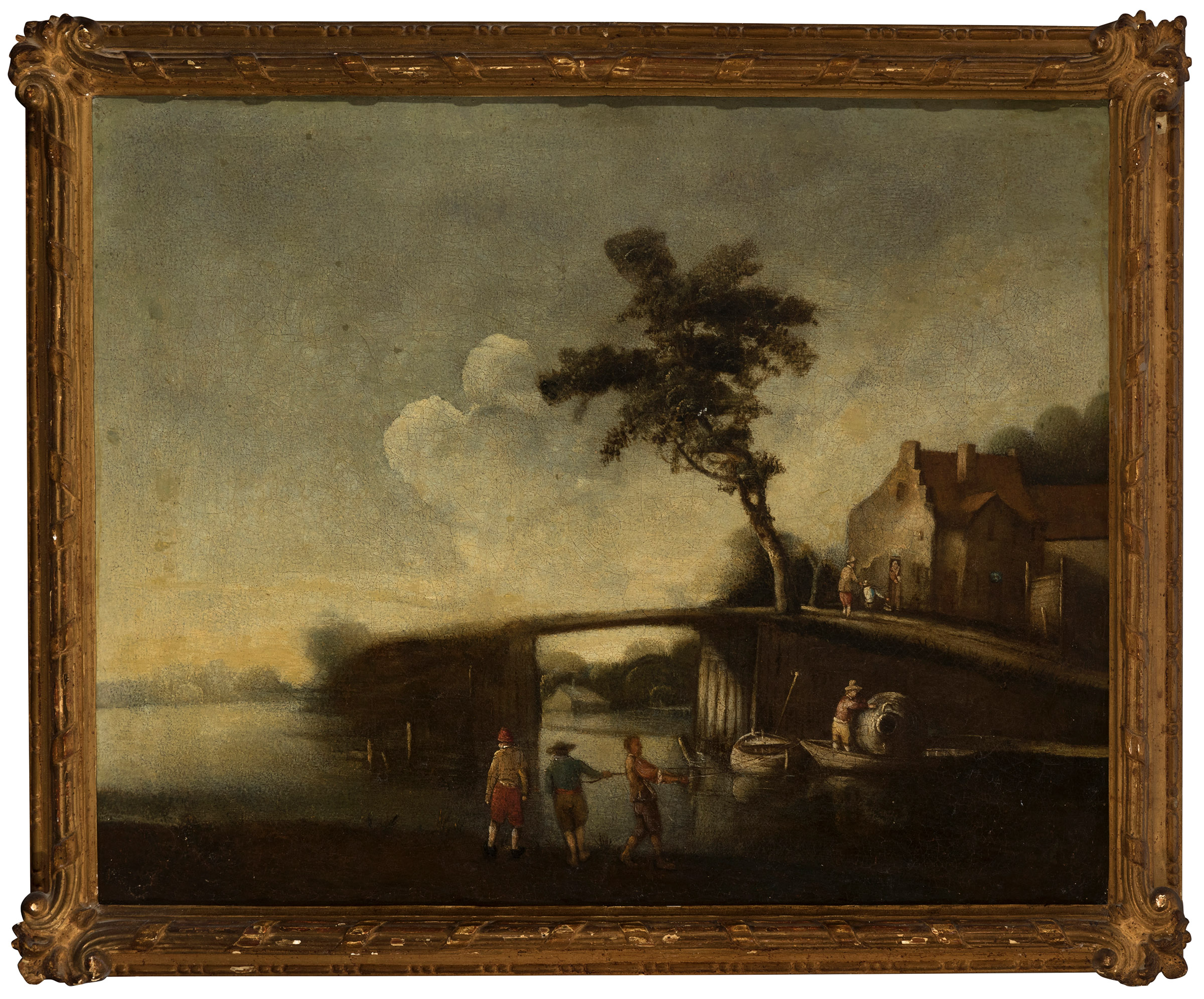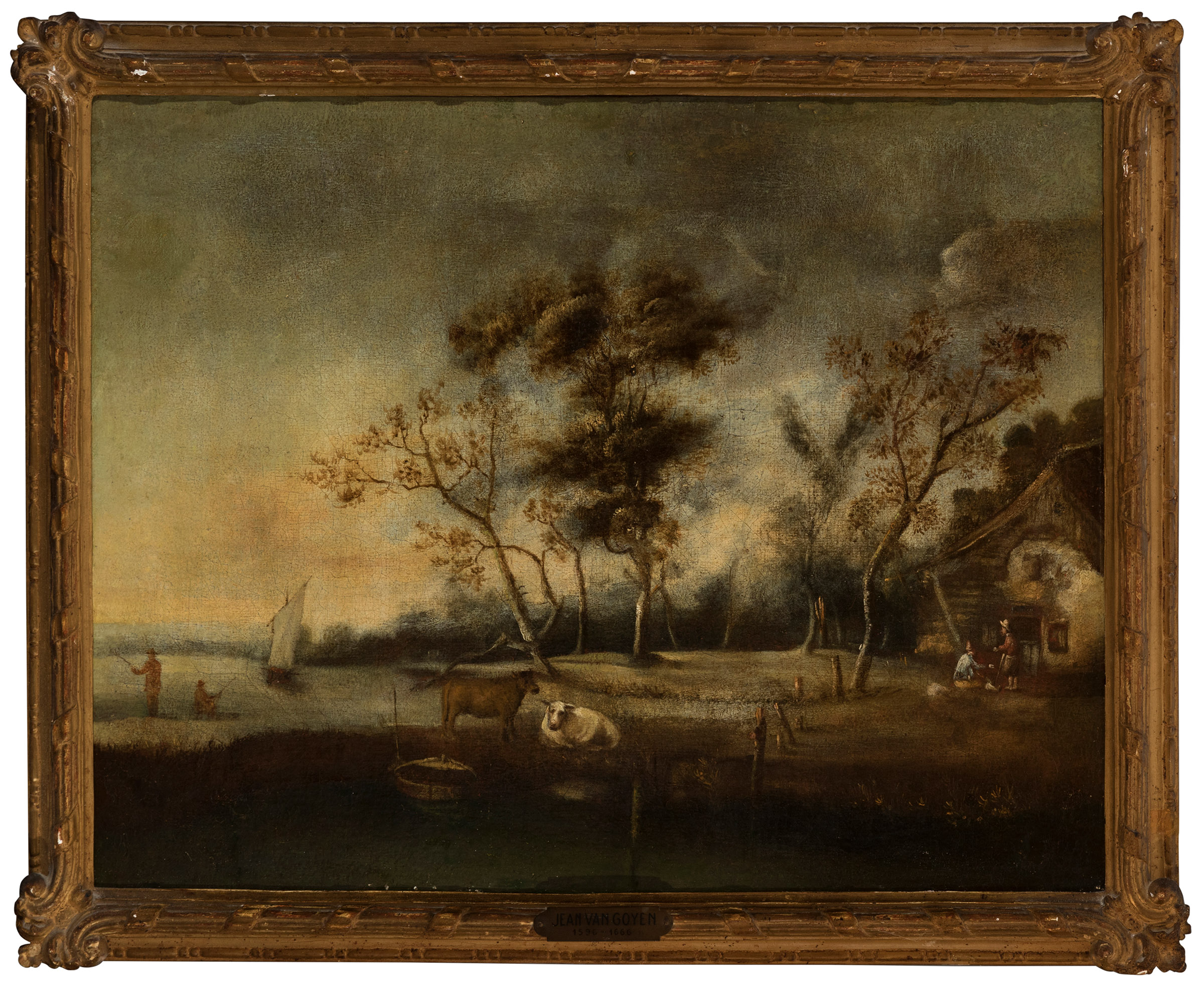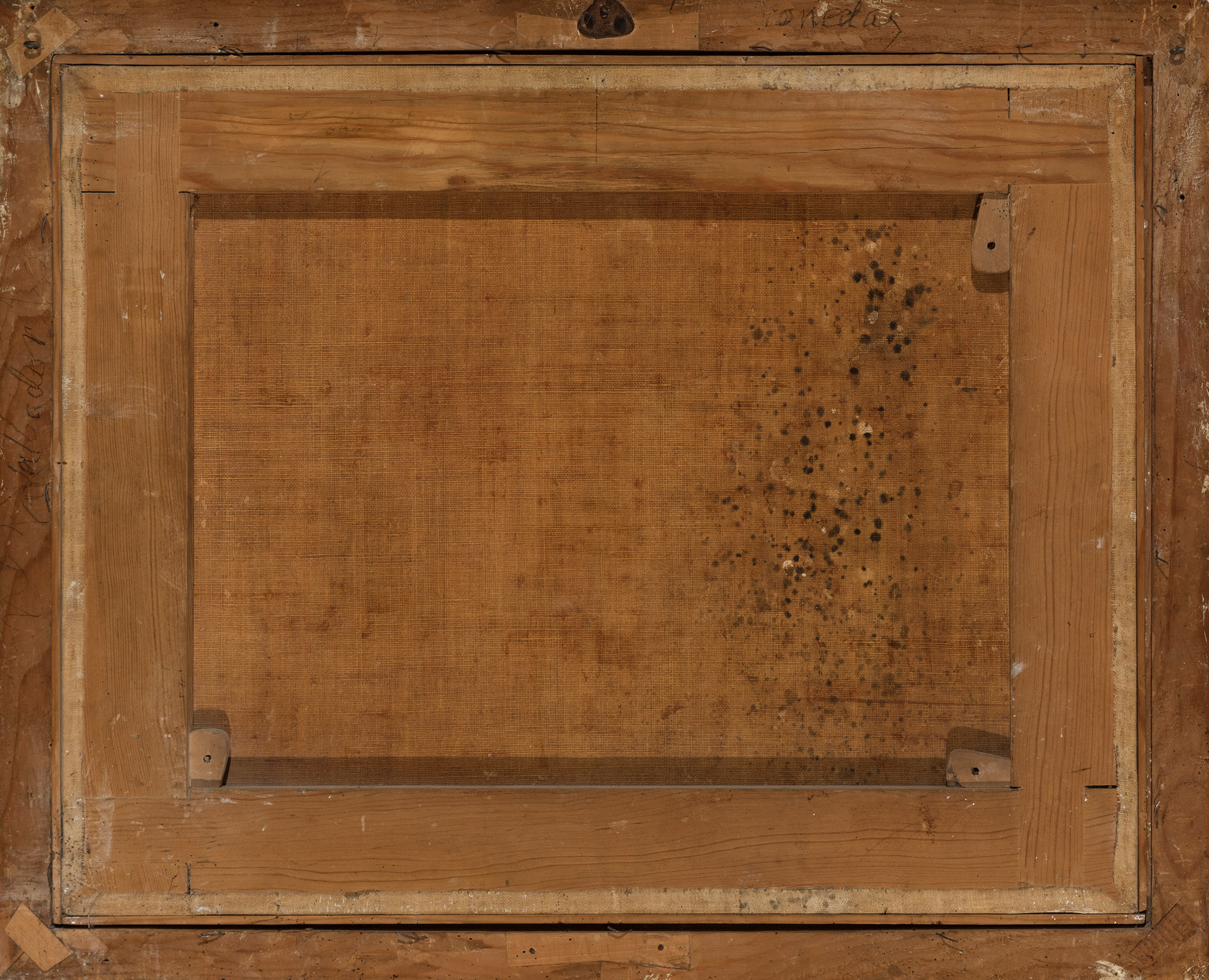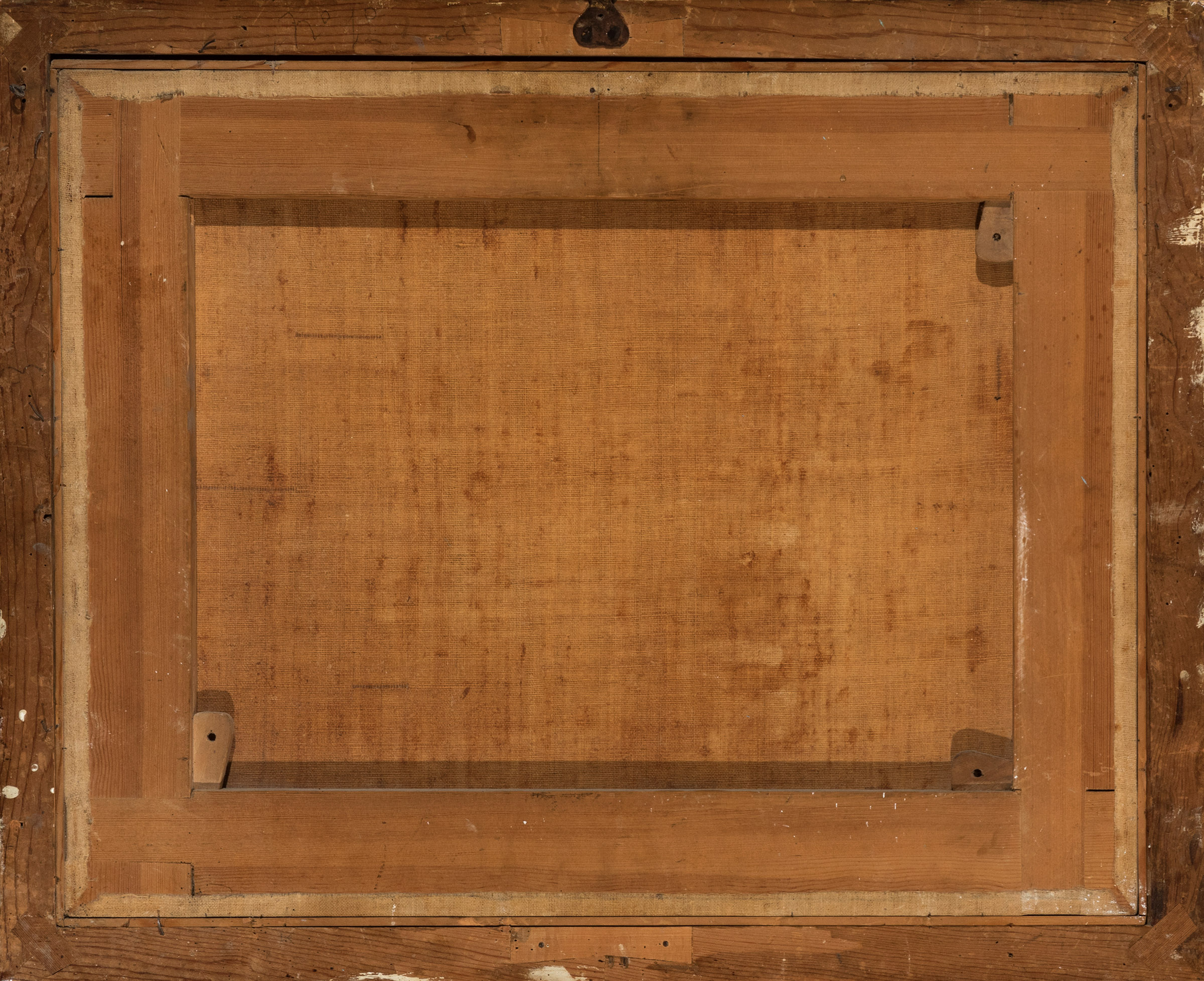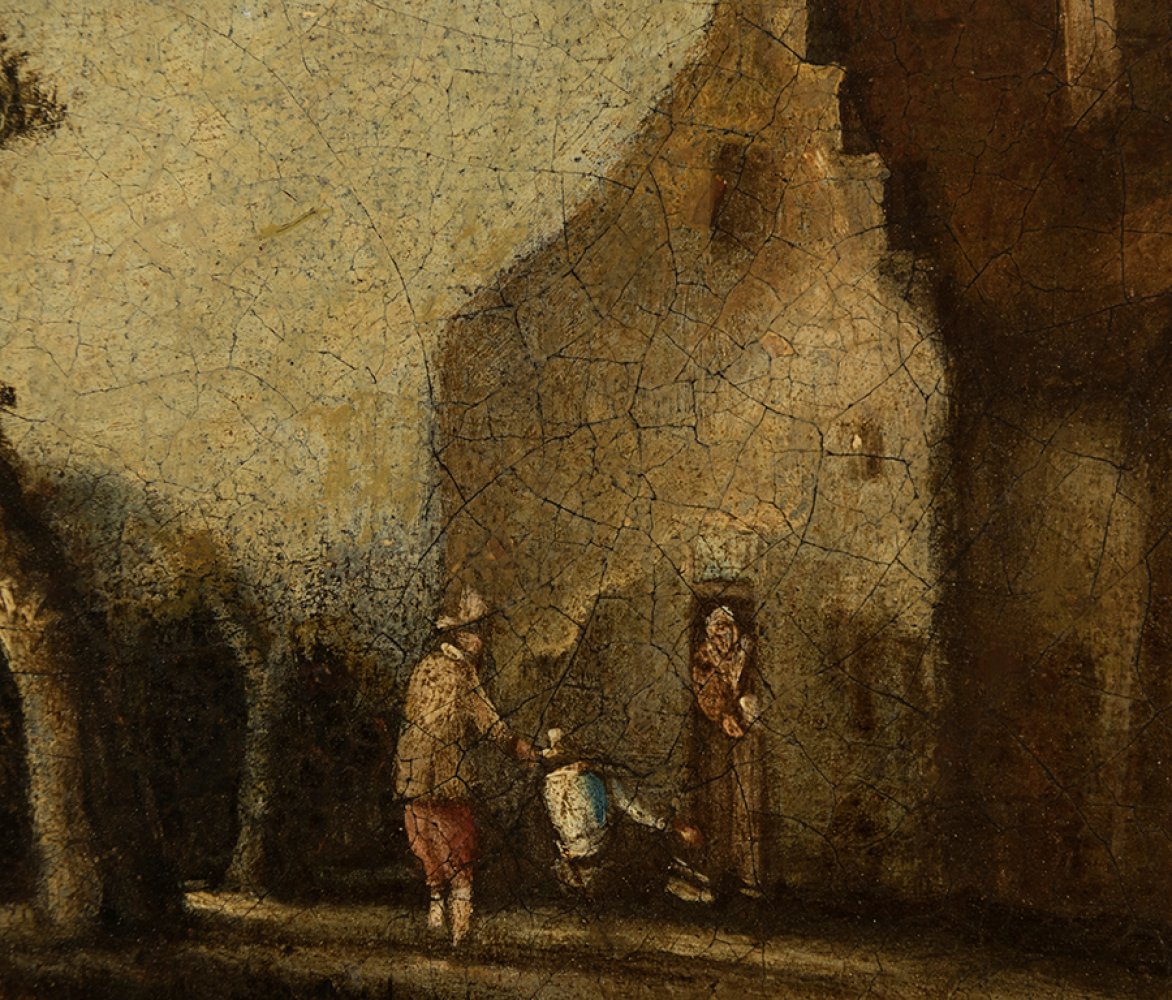43
Spanish school following Dutch models; late 18th - early 19th century."Landscapes".Oil on canvas.
1/7
Description
Spanish school following Dutch models; late 18th - early 19th century.
"Landscapes".
Oil on canvas.
Measurements: 50 x 62 cm (x,2); 57 x 70 cm (frames,x2).
Pair of landscapes that present the same aesthetics of realistic character and a similar composition in spite of the fact that the main motives of each scene are different. In both cases the images are enveloped in a golden light that bathes a lake and contrasts with the shadows in the foreground. Both pieces show the presence of figures engaged in everyday activities, although their size in relation to the landscape shows the artist's interest in capturing the landscape realistically, so that the two scenes seem to be a chronicle drawn from the social reality of the time.
Of all the contributions made by northern European countries to the history of art, none has achieved the enduring importance and popularity of 17th-century Dutch landscape painting. The works of Avercamp, Van Goyen and Ruysdael, among many others, evoke the outlines, terrains and atmospheres of the Netherlands more vividly than any other place, large or small, has ever been depicted. Within this tradition, the most revolutionary and enduring Dutch landscape contribution has surely been its naturalism. Seventeenth-century Dutch painters were the first to create a perceptually real and seemingly comprehensive image of their land and people. Although landscape as an independent genre appeared in Flanders in the 16th century, there is no doubt that this type of painting only reached its full development among Dutch artists. It can be said that it was practically the Dutch who invented the naturalistic landscape, which they affirmed as an exclusively central feature of their artistic heritage. There is no doubt that the Dutch painter, filled with pride in his homeland, was able to show in his paintings the beauty of its vast plains and skies.
"Landscapes".
Oil on canvas.
Measurements: 50 x 62 cm (x,2); 57 x 70 cm (frames,x2).
Pair of landscapes that present the same aesthetics of realistic character and a similar composition in spite of the fact that the main motives of each scene are different. In both cases the images are enveloped in a golden light that bathes a lake and contrasts with the shadows in the foreground. Both pieces show the presence of figures engaged in everyday activities, although their size in relation to the landscape shows the artist's interest in capturing the landscape realistically, so that the two scenes seem to be a chronicle drawn from the social reality of the time.
Of all the contributions made by northern European countries to the history of art, none has achieved the enduring importance and popularity of 17th-century Dutch landscape painting. The works of Avercamp, Van Goyen and Ruysdael, among many others, evoke the outlines, terrains and atmospheres of the Netherlands more vividly than any other place, large or small, has ever been depicted. Within this tradition, the most revolutionary and enduring Dutch landscape contribution has surely been its naturalism. Seventeenth-century Dutch painters were the first to create a perceptually real and seemingly comprehensive image of their land and people. Although landscape as an independent genre appeared in Flanders in the 16th century, there is no doubt that this type of painting only reached its full development among Dutch artists. It can be said that it was practically the Dutch who invented the naturalistic landscape, which they affirmed as an exclusively central feature of their artistic heritage. There is no doubt that the Dutch painter, filled with pride in his homeland, was able to show in his paintings the beauty of its vast plains and skies.
Auction Details
Shipping
T&Cs & Important Info
Ask seller a question
Spanish school following Dutch models; late 18th - early 19th century.
"Landscapes".
Oil on canvas.
Measurements: 50 x 62 cm (x,2); 57 x 70 cm (frames,x2).
Pair of landscapes that present the same aesthetics of realistic character and a similar composition in spite of the fact that the main motives of each scene are different. In both cases the images are enveloped in a golden light that bathes a lake and contrasts with the shadows in the foreground. Both pieces show the presence of figures engaged in everyday activities, although their size in relation to the landscape shows the artist's interest in capturing the landscape realistically, so that the two scenes seem to be a chronicle drawn from the social reality of the time.
Of all the contributions made by northern European countries to the history of art, none has achieved the enduring importance and popularity of 17th-century Dutch landscape painting. The works of Avercamp, Van Goyen and Ruysdael, among many others, evoke the outlines, terrains and atmospheres of the Netherlands more vividly than any other place, large or small, has ever been depicted. Within this tradition, the most revolutionary and enduring Dutch landscape contribution has surely been its naturalism. Seventeenth-century Dutch painters were the first to create a perceptually real and seemingly comprehensive image of their land and people. Although landscape as an independent genre appeared in Flanders in the 16th century, there is no doubt that this type of painting only reached its full development among Dutch artists. It can be said that it was practically the Dutch who invented the naturalistic landscape, which they affirmed as an exclusively central feature of their artistic heritage. There is no doubt that the Dutch painter, filled with pride in his homeland, was able to show in his paintings the beauty of its vast plains and skies.
"Landscapes".
Oil on canvas.
Measurements: 50 x 62 cm (x,2); 57 x 70 cm (frames,x2).
Pair of landscapes that present the same aesthetics of realistic character and a similar composition in spite of the fact that the main motives of each scene are different. In both cases the images are enveloped in a golden light that bathes a lake and contrasts with the shadows in the foreground. Both pieces show the presence of figures engaged in everyday activities, although their size in relation to the landscape shows the artist's interest in capturing the landscape realistically, so that the two scenes seem to be a chronicle drawn from the social reality of the time.
Of all the contributions made by northern European countries to the history of art, none has achieved the enduring importance and popularity of 17th-century Dutch landscape painting. The works of Avercamp, Van Goyen and Ruysdael, among many others, evoke the outlines, terrains and atmospheres of the Netherlands more vividly than any other place, large or small, has ever been depicted. Within this tradition, the most revolutionary and enduring Dutch landscape contribution has surely been its naturalism. Seventeenth-century Dutch painters were the first to create a perceptually real and seemingly comprehensive image of their land and people. Although landscape as an independent genre appeared in Flanders in the 16th century, there is no doubt that this type of painting only reached its full development among Dutch artists. It can be said that it was practically the Dutch who invented the naturalistic landscape, which they affirmed as an exclusively central feature of their artistic heritage. There is no doubt that the Dutch painter, filled with pride in his homeland, was able to show in his paintings the beauty of its vast plains and skies.
29th December - Old Masters
Sale Date(s)
Venue Address
Aragón 346, Barcelona
Calle Velázquez 7, Madrid
Carrer de Cirilo Amorós 55, Valencia
Barcelona
08009
Spain
General delivery information available from the auctioneer
Setdart offers Worldwide shipping
PICK UP IN ROOM: You can come and pick up your lots in our offices (Barcelona, Madrid or Valencia). At the moment of the withdrawal, you will be able to accept the current conditions of the lot by means of a document that you will sign.
YOU CAN SEND ANOTHER PERSON TO PICK UP: This person must present a signed authorization that you can find in our web page by accessing from BUY AT SETDART- LOGISTICS-DOWNLOAD AUTHORIZATION DOCUMENT. You can also send an e-mail with the requested data in AUTHORIZATION DOCUMENT to admin@setdart.com
Important Information
25% buyer´s premium
21% buyer´s premium at www.setdart.com















